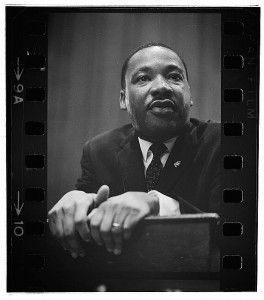The American conservation movement – beginning in the early 19th century – has been critiqued for privileging wilderness over ‘working landscapes’ as well as for marking wild places as spaces of privilege. This movement is associated with the founders of the National Parks and contemporarily influential conservation organizations, including people such as John Muir who helped found the Sierra Club. The Library of Congress’ has a collection on this movement. Critiques of conservationism have been important in recasting this conservation history in terms intended to further the integration of conservation successes while addressing deep social ruptures along lines of race, class, and various other divisive social realities. We receive this history of conservation & social contestation at least in our practice of methods from the conservation field, not to mention our performance of its ideological legacies or status markers.
The founders of the conservation movement and contemporary conservation practitioners are still grappling with a problematic social world described by Martin Luther King Jr.:

“When we look at modern man, we have to face the fact…that modern man suffers from a kind of poverty of the spirit, which stands in glaring contrast to his scientific and technological abundance; We’ve learned to fly the air like birds, we’ve learned to swim the seas like fish, and yet we haven’t learned to walk the Earth as brothers and sisters…”
– MLK, Nobel Lecture Dec 11, 1964
MLK gave his life to anti-racism and anti-violence ends. His legacy is immanent. Duke Divinity Alum, Johnathan Wilson-Hartgrove compares the NC NAACP leader, Rev. Barber, to MLK and highlights his grassroots organizing ability (2013). This past Saturday, 2.17.16, Barber led the “Moral March” in Raleigh, including the 10th annual people’s assembly, termed HKonJ (Historic Thousands on Jones Street). This movement identified the event as the “largest civil rights demonstration in the South since the march to Selma in 1965” (HKonJ). The overlap between civil rights and conservation movements is located topically in the field of environmental justice.
I will point to two expressions of this discussion at the Nicholas School of the Environment at Duke University. Elizabeth Shapiro-Garza is co-teaching a course with Melanie Allen titled Diversity, Inclusion, and Environmental Justice. A series of speakers in February and March have also been scheduled for talks at Duke focusing on environmental justice. I attended one of Dorceta Taylor’s presentations, which was a great opportunity after learning of her work on The State of Diversity in Environmental Organizations: Mainstream NGOs, Foundations, and Government Agencies (2015) which informs the Green 2.0 report. As suggested in the title, this report offers quantitative assessment of diversity in Environmental Organizations and was partly funded by the Sierra Club, an emblematic group in the formation of the conservation movement.
Dr. Taylor’s report provides a sobering assessment of diversity in environmental organizations in terms of concrete numbers. This confirms general conceptions that ‘environmental professionals’ are primarily white and that top positions in environmental organizations are held by white males. Dr. Taylor’s work also highlights inequity expressed in gendered terms, which is perhaps less apparent. As suggested by the Sierra Club’s partial funding of this work as well as representatives from Audubon, Sierra Club and others serving on the working committee of Green 2.0, these conservation organizations are participating – at some level – in attempting to improve the state of diversity in their own environmental organizations and the broader field. These concrete assessments are surely helpful. For instance, diversity targets can be set and evaluated. However, there are not easy answers to the underlying problems reflected in Dr. Taylor’s data. From the perspective of the institutionally-located individual, it seems honesty with ourselves, our histories, and our organizations is a good starting place for building relationship in the space of rupture.
More than taking a serious look at Dr. Taylor’s data, we should listen close to the voices calling for environmental justice all around us. If this doesn’t call us to account, we aren’t listening. The recognition of limits among subjects in deference to other subjects, in fact, is what the conservation movement is built on. While heated debate has raged regarding the source of rights of other species – whether intrinsic or extrinsic and utilitarian – such debate largely absent from conservationists on the source of rights within our own species. Our constitutional, inalienable rights were constructed in the midst of slavery and the exploitation of American Indians, a tragic irony. Accordingly, racism has historically been predicated on anti-scientific and false claims that posited race as a biological construct, connoting relations of inferiority and superiority, rather than a social construct securing economic profits among a ruling class. These false claims have been thoroughly dismissed by the human genome project, which identified that the genes of humans are 99.9% identical and, as Duanna Fullwiely explains, that “there is no genetic basis for race” (here). Complicating the narrative further, evolutionary anthropology has identified a number of actually distinct species in the Homo genus — 6 other hominids recognizable during periods within the past 2 million years, though now all of these others are extinct. The basic conclusion is that the genetic diversity of Homo sapiens is incredibly limited compared to other species who have been around longer in evolutionary time. Perhaps the conservation field can help reframe the fragility of our own species in its attending to the fragility of other species.
